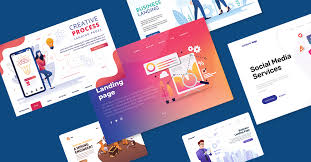Landing page optimization is crucial for any business looking to drive conversions and increase sales. A well-optimized landing page doesn’t just attract visitors—it turns those visitors into paying customers. Whether you’re running a paid ad campaign, promoting a product, or gathering leads, your landing page plays a pivotal role in the success of your online marketing efforts. In this article, we’ll explore the key strategies and best practices for optimizing your landing pages, so you can maximize your conversions and boost your ROI.
Understanding Landing Page Optimization
Before diving into the specific tactics for improving landing pages, it’s essential to understand what landing page optimization means. At its core, landing page optimization refers to the process of refining your landing page to make it more effective in converting visitors. This involves improving various elements such as layout, design, content, and call-to-action (CTA) buttons to ensure they align with user intent and drive the desired action.
Landing page optimization isn’t a one-size-fits-all approach. What works for one business might not work for another, so it’s important to continuously test and adapt based on data and feedback. Conversion rate optimization (CRO) is a data-driven process, and your goal is to make incremental improvements to increase your conversion rates.
Crafting a Compelling Value Proposition
The value proposition is one of the most important elements on your landing page. It communicates to your visitors why they should take the desired action. When crafting your value proposition, you need to be clear, concise, and focused on the benefits of your product or service.
A strong value proposition highlights the unique selling points of your offering and answers the visitor’s question: “What’s in it for me?” To be effective, your value proposition should address the pain points of your target audience and explain how your solution will solve their problems or improve their lives.
Make sure that your value proposition is placed prominently on the landing page, ideally near the top where visitors can easily see it without having to scroll. It should be the first thing they read, as it sets the tone for the rest of the page.
Streamlining Your Landing Page Design
The design of your landing page plays a significant role in its effectiveness. A cluttered, visually overwhelming page can deter potential customers and result in high bounce rates. To create an optimized landing page, focus on a clean and simple design that guides visitors toward taking action.
Here are a few design tips to keep in mind:
Use white space effectively: White space helps to break up content, making your landing page easier to read and navigate. It prevents your visitors from feeling overwhelmed and allows them to focus on the key elements of your page.
Mobile responsiveness: More people are browsing the internet on mobile devices than ever before, so it’s essential that your landing page is mobile-friendly. Ensure that your page looks great and functions smoothly on smartphones and tablets.
Highlight key elements: Your CTA button, value proposition, and other key content should be easy to spot. Use contrasting colors and strategic placement to make these elements stand out.
Keep the page focused: Limit distractions by eliminating unnecessary navigation links and sidebars. The goal is to keep visitors focused on the primary objective of your landing page.
Crafting Persuasive Copy for Conversions

The copy on your landing page is crucial in persuading visitors to convert. You need to speak directly to your audience and explain the benefits of your product or service in a clear and engaging manner. Here are some tips for writing high-converting copy:
Use compelling headlines: Your headline should grab attention and encourage visitors to stay on your page. Make sure it’s clear, concise, and speaks to the visitor’s needs.
Focus on benefits, not features: While it’s important to describe your product or service, focusing on how it will benefit the customer is far more persuasive. Highlight the outcomes and results they can expect from using your product or service.
Use social proof: Testimonials, reviews, and case studies are powerful tools in landing page optimization. Social proof helps to build trust and credibility with your audience, increasing the likelihood that they’ll take action.
Be concise: Avoid overwhelming visitors with too much information. Keep your copy clear, direct, and focused on the key points that will motivate visitors to convert.
Optimizing Your Call to Action (CTA)
Your call-to-action (CTA) is the most important element on your landing page. It’s where the conversion happens. Whether your CTA is a button, form, or link, it should stand out and be easy for visitors to interact with.
Here are some best practices for creating an effective CTA:
Use action-oriented language: Your CTA should tell visitors exactly what to do. Use phrases like “Get Started,” “Sign Up Now,” or “Download Your Free Guide” to create a sense of urgency and encourage action.
Make it visually distinct: Your CTA button should be large enough to catch attention but not so large that it feels out of place. Use contrasting colors to make it stand out from the rest of the page.
Keep it above the fold: Place your CTA where visitors can see it without scrolling. You can also include multiple CTAs throughout the page to give visitors options.
Test different variations: A/B testing different CTA designs, copy, and placements can help you determine which version performs best and drives the most conversions.
Optimizing Landing Page Load Speed
Page load speed is another critical factor that can affect your landing page optimization efforts. Slow-loading pages can frustrate visitors and lead to high bounce rates, which negatively impacts your conversion rates.
To optimize your landing page’s load speed, consider the following tips:
Compress images: Large images can slow down your page’s loading time. Use image compression tools to reduce file sizes without sacrificing quality.
Minimize scripts and plugins: Excessive scripts and plugins can also slow down your page. Keep your code clean and avoid unnecessary elements that could increase load time.
Use a content delivery network (CDN): A CDN can help speed up your landing page by delivering content from servers that are geographically closer to your visitors.
Optimize your hosting environment: Ensure that your hosting provider offers reliable performance and fast load times.
A/B Testing and Iteration
Landing page optimization is not a one-time task. To continually improve your conversion rates, you need to test different variations of your landing page and analyze the results. A/B testing is a powerful method for comparing two versions of your landing page to see which one performs better.
You can test various elements, such as headlines, CTAs, images, and even the overall design. Use the data you gather from these tests to make informed decisions about which changes to implement and which ones to discard. Over time, these small adjustments can lead to significant improvements in conversion rates.
Using Analytics to Measure Performance
To truly understand how your landing page is performing, it’s essential to use analytics tools. Google Analytics and other tools can help you track key metrics like bounce rate, conversion rate, average session duration, and more.
By regularly reviewing these metrics, you can gain insights into where visitors are dropping off, which elements are performing well, and which ones need improvement. This data is invaluable when making decisions about future landing page optimizations.
Conclusion
Landing page optimization is an ongoing process that requires careful attention to detail and constant testing. By focusing on key elements such as your value proposition, design, copy, CTA, and page load speed, you can significantly improve your chances of converting visitors into customers. Remember, the goal of landing page optimization is not just to attract traffic but to turn that traffic into tangible results. Keep refining your approach, test different strategies, and continuously improve your landing page to achieve higher conversion rates and greater business success.
By following these strategies, you’ll be well on your way to mastering landing page optimization and maximizing the effectiveness of your online marketing campaigns.


